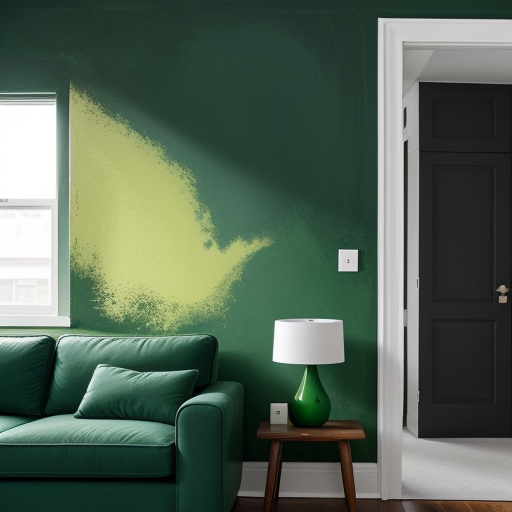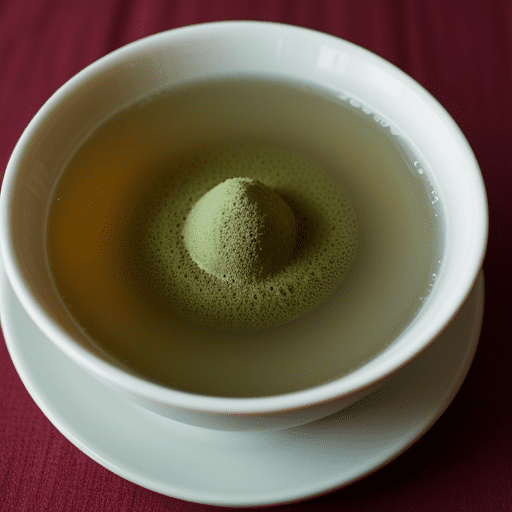Mastering Your Short Game: Tips and Tricks for an Impeccable Putting Green
The fact of the matter is that if you are a golfer who wants to improve his game and lower your score, then there is no way around mastering how to putt. Putting is often called the “game inside of the game” and requires precision, focus, and a soft touch. It can make the difference between a birdie and bogey, making this an area that is worthy of paying considerable attention to. At this sub-point, you will find all the crucial tricks and tips for improving your putting game. In everything from the moderate bumps and hollows of a green to your putting rhythm, we will discuss tips for stealing in scoring that seasoned pros swear by. We’ll also look at how important it is to stay mentally on top of your game, even when having difficult batting and bowling phases. No matter if you are a beginner or an experienced player, these lessons will improve your putting game—establishing those tough long putts as assists and normalizing the short-pressure strokes—and they will revolutionize how you play on the green.
Understanding the Basics of Putting
Baseline knowledge of good putting is what you need to master the simplest shots in golf. Putting is all about accuracy, attention to detail and knowing the nuances of a green. There are a few things to remember; first the grip, it should be light and unchanging to complete each stroke. Your posture should be athletic, and closer to medium than tall with feet a little more than hip-width apart and an alignment that places your eyes right over the top of the ball.
Reading the green properly — taking into account every little slope, grain and speed of how your ball will roll. A controlled backswing and follow through is important; the putter should swing like a pendulum with as little wrist break as possible for consistency. Just as important is creating a strong pre-shot routine which would help maintain confidence while reducing the effects of pressure. By practicing these fundamental skills diligently, you can quickly improve your putting abilities that will show through in better overall play on the greens.
Grip: Proper hand placement for maximum control
Hand position is key to maximum control and consistency on the putting surface. What grip you decide to use can have a major effect on how well your stroke works and the general sensation of each one of our putters. A great approach is the reverse overlap grip where your left hand (for right handed players) butts up agains tthe contact of teh golf club and this pinkie quietly rests on top of index finger. This grip encourages a connected stroke that keeps your wrist more one pieced and the result is less breakdown in the wrists and a much smoother square to squared strike.
Make sure your both hands are working together as one unit. Your thumbs and forefingers should form a V that points at your right shoulder. Ensure the grip is light and not too tense as this will make potato-huffling difficult, discuss freedom of movement with feel. Focus on constant grip pressure, meaning you must apply the same amount of force throughout your shot; this provides not only control but also accuracy. “Playing around with grip styles like the claw or cross-handed can help, too. Nailing down the right hand placement not only stabilizes your putt, but it also provides an impact that increases confidence and eventually lowers the score as well if you have fun on the green.
Stance: Finding a balanced and comfortable stance
How you set up to the ball is crucial if you’re going to improve your short game, and there’s no place that says more about how a person plays golf than when they position themselves on their putting green. How to: Take a shoulder width stance placing your feet either side of the starting line and at least add more than inch while being parallel footed step, this will help in keeping stability as well as centering up. There should be an equal amount of weight on both feet. Keep your knees bent slightly to get rid of stiffness and tension. You have to line up your shoulders, hips and feet parallel with the target path so that you can make a straight putt.
This is directly associated with your posture, keeping a straight back will minimize strain on the spine and allow for a pendulum-like motion in your putt. Slouch slightly from your hips while keeping the center of one edge along the ball. This position sets up better for being able to see the line of their putt which helps with accuracy. Your arms are hanging in a position that feels natural and comfortable, which puts you into what I call the ready-but-relaxed putting grip.
Creating a stable base has benefits beyond the strokes on your scorecard — it also breeds confidence, making you feel comfortable over top of every single putt. For me, the greatest take away has been that these are skills which require regular practice to find and keep equilibrium in them. This is where long term improvement lies in your putting performance…
Alignment: Ensuring your putter face and body are properly aligned
Putting is all about alignment with the hole. Correct alignment will put the face at, and align your body to it so you are more consistent with where on the cup things go. Start by walking behind the ball to see where you want your putt to roll. Then, position just the putter face to be square with this line. One way to help with this is by using alignment canes, a chalk line or even the logo of your golf ball.
After you have aimed your putter face properly, it is important that our body be aligned parallel to this intended target line. Eyes Over The Ball —Your eyes should be basically over the ball, square stance (shoulders and hips parallel to target line). Consistency in this aspect of your pre-shot routine will help to establish that alignment. Basically, if you want to putt like a machine and hole more putts on the green then practice does help create muscle memory to perform better and get consistent results.
By thoroughly ensuring you are lined up correctly, it rules out a critical thing that could cause missed putts and what now has the ability to be an almost perfect putting game.
Stroke: Developing a smooth and consistent putting stroke
The biggest key to a great short game in golf is developing a consistent and smooth putting stroke. A consistent putting stroke is the key to shaving strokes off of your game. Begin with a grip — generally the reverse overlap, where your index finger on the non-dominant hand sits over (your left pinky if you’re right handed) — and It offers a secure and controlled grip. Then, get your balance right: feet about shoulder-width and eyes over the ball so that you are aligned.
The stroke itself should be a nice, easy pendulum motion as you rock the putter head back and forth while keeping your wrists very solid. There should not be any sudden movements or a break in the wrist during your swing. Practice keeping a consistent tempo throughout the song Another thing you can do is visualization techniques; see the ball dropping into the hole as you take your shot. The more you practice these fundamentals, even if it practicing on the gate drill or putting along a chalk line for 20 minutes each day before your round of golf, then this is how one will improve their consistency and start seeing success in make-able putts.
Techniques to Improve Your Putting Accuracy
One of the keys to mastering putting is accuracy and that aspect alone can bring your scores down on its own since it has a lucid bearing effect during short game shots in golf. A key way to do so is commiting yourself to a routine before you putt. This includes lining up the face of your putter at your target, doing a few practice strokes for distance and pace control, as well as making sure to have proper stance with eyes directly above ball. Ensure that your movements are still in control to maximize contact and direction.
Or use a yardstick on the green to create your inline, thus practice with alignment aids. Finally, practice distance control by laying out markers of different distances and work on rolling the ball to each marker. Practice this drill on a regular basis so you can make your muscle memory feel its best and improve accuracy.
Last but not least, consider looking at the break and slope of the green. Aligning your putt with the correct speed of stroke is important and so too is addressing break by reading greens properly. Consistent use of these methods is sure to result in a higher success rate and better putting statistics.
Reading Greens: How to interpret slope and grain
Aimpoint Express Click below for more help with setting up and using the AimPoint express read presented by GOT Scott Hamilton 503-5048627.ago.skillsforchampions.com Mastering your short game, if you want to have an amazing putting experienceReading greens are critical! The direction of a green has an absolutely massive impact on the path that ball is going to take. The key to reading slope correctly is first understanding the general shape of the terrain as you walk onto a green. Highlight on a map high spots and low points of the terrain, count mild or severe sloop lines. Walk to the other side of the line as well, and get a view from that angle Do this process at least 2 times so make sure you understand how everything slopes.
The grain, which is oxygen the grass grows in has a big effect on how much further your ball rolls. Grass blades grow with the sun and water, showing a shinier face down-grain, but against it much darker and rough around the edges. Downhill putts will be quicker, uphill slower. This plays along with the slope that will help you predict what an exact ball is going to do.
Ultimately, practicing reading the greens for each round and observing how putts react on different types of surfaces — then making adjustments with your green-reading skills — will help you develop more accurate reads and improve your putting performance.
Distance Control: Methods for gauging and controlling distance
Distance control on the putting green is key to shooting lower scores and enhancing overall game management. A basic idea is to create a routine where you go through how exactly what the putt looks like (both downhill and uphill), then take your strokes. An easy exercise is the ladder drill in which you lay down tees or coins at even yardage increments along a straight line and hit putts of different lengths to help develop an awareness for kind. The “clock drill” (pictured above) allows you to set up balls in a circle around the hole at various distances, testing your ability to test putts from different angles and lengths.
Another can be the “pendulum swing,” which enables you to create reliable distances by keeping a tempo and stroke length. Focus on green speed and find your stroke against the greens; faster greens have a shorter touch, while slower greens take longer strokes. The more you can practice these methods, the better you will develop muscle memory for distance control when making those precise putts in all conditions.
Visualization: Mental techniques for confident putting
One of the mental techniques that really can help your putting on an actual green is visualization. Before even taking the shot you want to visualize what a great outcome would look like in your mind, and this will help with both confidence as well as muscle memory. Begin by relaxing well and visualizing every aspect of the putting routine. Imagine what the ball is doing — from right as it leaves the face of your putter until it finds the bottom of that hole.
Zero in — the speed, how much grain the green has, is it straight or are you playing more? and even that sound of falling ball into hole. This visualization will help your mind and body to do the stroke first, making it perfect. Doubling down with visualization together with deep breathing can release more tension lowering, sharpening focus cannot go wrong. When you practice this consistently, it can help your mind to remain calm under the hot conditions that is crucial for more fundamental putts on-the-green.
Practice Drills: Useful drills to enhance accuracy and precision
Driling will develop your putting greens accuracy and precision, turning the unassuming short game into one of strength. This is where the **Gate Drill** can be a really powerful tool in your putting game- you will setup two tees just wide enough for your putter to pass through and practice rolling some balls between those anything but easy-to-hit targets. This exercise is designed to provide a cycling back-and-forth bidirectional encouragement for the straight stroke.
Next the Clock Drill — you set balls up in a circle around hole on an arc at various distances from that location. Working on putts from different directions gets you used to the breaks and speeds of all new angles. The **Ladder Drill** is another exercise you can do: Set up tees with more space between them as they get further from the hole, then putt each ball in turn. It helps you visualize touch and control your distance.
Along the same lines, a **String Line Drill** is very important to work on as it makes you set up square and practice aiming your putter correctly. They will help you to remember the basics more and also give your confidence a boost, meaning that when those important putts come in it is all then so natural. Including these drills in your practice will help you significantly increase the number of putts holed, putting a lower score on the board.
Equipment Matters
One aspect of the short game range that is frequently overlooked, but probably requires a little more attention than most people give it, is having and using the right kind and quality equipment for our own individual playing style. The putter is key in helping to achieve the precision and control you need on the green. Balance and weight are something to pay attention down below the grip of your Rife putter — AKA how the different types will affect where you hit on a spectrum from lightr not tas much towards HEAVY, while options like length have an… Test out different head shapes and alignment aids to see which works best for you as they can greatly affect your accuracy, depending on what feels comfortable in your hands.
The golf ball you use, can also set the tone for your performance. Choose balls that give a decent feedback and control, even roll & adequate softness. Ultimately, the grips matter as well; they should provide a secure grasp without guardrails placing undue pressure on you and enforcing for effortless movement.
And, obviously, you should always be mindful of how your equipment is maintained: keeping the clubs clean; checking for nicks and any signs of damage that may compromise their performance or lead to injury—my putter face must remain true! Spending more time and thought into your equipment choices can help save you strokes on the greens.
Putter Selection: Choosing the right putter for your style
Your short game is extremely bolstered or weakened by your putter selection and you can take control of the accuracy in green with Ayput wisdom. Having the best putter is largely dependent on how your stroke style falls in line with which type of preferred technology you can play within. Start with the head style: blade putters excel at precision for straight putting strokes, mallets offer higher forgiveness and are rated better for arced stroke because of their larger sweet spot. Shaft length is another related area; the standard of this element range from 32 to 36 inches and should provide your eyes with straight alignment over the ball which can improve stroke consistency. Another thing to consider is the weight of a putter: Heavier versions might be more helpful for slower greens as they can lead to an improvement in free-flowing strokes, while Lighter units would be much better on faster ones where control becomes all-important. Besides, look out for the grip measurement — bigger grips may help to avoid wrist action and keep strokes in line. Trying out a variety of putters and having them fitted properly will make you more confident, making for better putting.
Ball Type: The impact of different golf ball characteristics on putting
If you are someone who is always looking to mix things up or improve your play on the putting green, then choosing a golf ball that resonates with what you practice and compete in can impact how low of score you shoot. Cool Springs Post: There are many different ways that golf balls — especially the varying compression of softer and firmer spheres, core construction materials and how a ball’s cover is manufactured to dimple pattern influences its interaction against grass on greens.
The first is the compression of the ball which defines how soft or firm it will feel and thus; how responsive. But a softer feel ball, such as those that we have lower compression for better control on short putts. On the other hand, higher compression balls provide you with a harder feel that can throw off your distance control if not used to.
The type of cover material is the next important determinant. Urethane covers found in more expensive balls can add a softer feel and improve the ability for spin control — which could help on one or two long putts. On the other hand, ionomer covers that are found on less expensive balls can feel firmer and be lower spinning which could affect your putting as well.
Finally, dimples can affect how smoothly the ball rolls on the green. Because balls with shallow but uniform dimple patterns tend to roll more consistently, that means they send the ball on a truer path towards the hole.
And if the amateur golfer understands these nuances and how they relate to one’s putting style, it will provide guidance in terms of what type of putter an individual ought to use which would result in more consistent success putting on any green.
Training Aids: Effective tools to help improve your short game
The intricacies of putting, particularly the art of sinking a short game to hone your skills use can be really priceless in case you do just an appropriate training on it. It offers a putting alignment mirror that is an aid to help golfers have their eyes, shoulders and the putter face in proper relation. The gait drill also helps you with your short putting as there are two tees (or small objects) placed a couple of inches apart on the green to simulate hitting the ball through a narrow gate which encourages consistency and accuracy in one’s stroke.
The metronome app or a pendulum motion guide is very effective for those who have tempo issues as it will help get them into the natural, rhythmic stroke. A chalk line or string is an easy, low tech alignment tool to literally put a visual on the importance of accuracy and missing straight ones. Impact stickers near the center of contact on your putter face will show you where your stroke is missing it, and help you see what kind of input changes are necessary to keep impact from happening there.
These tools do not only sharpen technical proficiency but also develop a strong mental game-making practice putting something that you can quantify.
Maintenance: Keeping your equipment in top condition for best performance
Better equipment also maintained better and sharp helps in the short struggle, mostly on putting green. First and foremost, make sure to often clean your putter in order not have any impurities caused by dirt or grass interfere with its accuracy. Clean the clubhead and grip with a damp cloth using mild soap. Putter Grip: Check your putter grip for wear; a well-worn one can cause you to lose control and make less consistent strokes. When grips wear out, replace them to keep an excellent grip.
Inspect the putter face for scratches and dings that can affect ball roll. If damage is heavy, you may want to seek professional repair or replacement. Also, keep your wear and tear in a well-ventilated area free from humidity to avoid oxidation or bowing. Headcovers can prevent dents and scratches forming while the putter is stored away. Check to make sure your shaft is still straight and has not become bent as even the smallest of changes can impact the direction in which you putt. Keeping a clean putter is essential for maintaining consistent short game.
Overcoming Common Putting Challenges
Your short game, particularly putting is more about finesse and precision. Reading the greens is one of the things that all golfers struggle with. The way to combat this is continually working on reading the slope and grain of every one. Pay attention to light bouncing off the green, grain influences ball speed. Controlling the distance is another challenge. Varying the lengths of your practice reduces consistency errors and will give you a better touch in goal. Use different exercises such as the ladder drill to develop your distance control. Focus on getting your eyes straight down over the ball, and use alignment aids you can see to stay in line – i.e. markers on balls or putters lines that are parallel with your target line from address. Conquering that is also paramount; try to breathe deep and practice a similar pre-putt routine so you handle your nerves in crucial situations. Through regular practice of the above common difficulties, your confidence and performance will improve to an exceptional standard on those pressure added putts.
Handling Pressure: Techniques for staying calm under competitive conditions
Dealing with pressure on the green is a requirement for anyone trying to achieve cоnsistency and success in golf. Being mentally prepared is as important, if not more so than the physical ability for any sport. Start by practicing mindfulness like deep breathing, which calm your mind and focus on controlling your heartrate to remove anxiety. Another very efective one I find is visualization, every time you’re about to step up and hit your shot visualize the perfect stroke with the ball going into that hole. Also, establish a pre-shot routine so that you have something familiar to hold onto in the face of nerves and this will help build some confidence. Equally important, is employing positive self-talk; counter thoughts of failure with reminders of skill and success in the past. And lastly, keep it all in perspective — one putt does not make your round. Combining these methods, you gain a mental shield of force against your competitive fears whereby skills can extend freely and unbridled.
Addressing Common Mistakes: Fixes for typical putting errors
Improvement on the potting green will greatly improve your overall game of golf and has many errors. A common mistake is poor alignment; lot of golfers seen the line wrong, as they do not set their bodies correctly. Use alignment aids such as a club or an alignment stick if you are not sure your body and putter position is heading towards the target. This is another common mistake that causes inconsistent distance as well. Try to keep your stroke like a pendulum, creating smooth motion for improved consistency in putting. This causes you to miss shot as well by trying to stuck it up on a green. Study the slopes and grain of the grass from different angles. Also, not practicing 6-foot and in putts is something that tends to get neglected the most. Develop a comfort level by taking and practicing these close shots continuously until you are free from any anxiety during the actual game. If you address these common shortcomings, it will yield a more consistent and successful short game.
Managing Different Green Speeds: Adapting to various green speeds and conditions
Having a putt game that is consistent and successful requires being able to manage different green speeds. The first gate to successfully read greens is in keen observation of the putting surface, which changed green speeds and conditions. Factors such as the type of grass, how thick it is mowed to be, moisture, slope will all effect ball roll.
Practice putts of different lengths to get the speed down. If you really are dealing with quicker greens, choke up more on the grip and make a shorter backswing — that will stem your tee shots from sailing over. Instead, for slower greens lengthen your backstroke more and just impinge through the ball.
Having a pre-putt read routine can assist with this. Now walk the length of your putt, you will feel these subtleslopes. Use disadvantages concentrating on speed control, for example setting tees at interims along a putt line and attempting to quit the ball at each tee.
Lastly, remain adaptable. Weather and course maintenance can both change conditions during a round. With consistent practice on different greens, you will become skillful at changing the line and knows how much to aim for each type of green making sure that you bring your scores down.
Building Confidence: Strategies to develop a confident and reliable putting routine
Confidence on the putting green is key to developing your “short game. Get a routine first — practice makes perfect as they say. Begin your pre-putt with a ritual of breathing, seeing the line and taking tow smooth motions to get yourself into bunger for when you stand over the ball. As long as your routine is consistent you will be able to continue building the foundation of confidence.
Step two — fix your stance and grip; you want to feel good, comfortable, balanced. This ensures a balanced, steady solid base from which to cleanly take stokes with confidence Pay attention to your alignment– for example, find some training aids or simply a rough guide on the range each day and over time you will train yourself where straight between those guides is.
This way you can practice with a variety of greens on the regular, learning how to read different slopes and banks. Do touch drills such as the ladder drill (try to land a series of balls at incremental distances away from the hole) and do speed control drills.
Review performance regularly and making changes. This way, you not only have more confidence over your process (where a good portion of that pressure comes from), but know with certainty it will perform under stress. In the end, all of that consistent practice and routines just strengthens your mental game as you go into each putt with confidence.
So what have we concluded?
So there you have it folks, the roots to mastering your short game and more importantly…approach on that putting green from 150 yards in! When you put your attention here instead on refining very specific tips and tricks like stance, grip or stroke; it can really make a difference in how well you get the ball where you want. Regular practice sessions where you mimic real-game situations will enable you to gain an excellent feel for how far away the flag is when sorting out club and yardages, as well green reading. Furthermore, learning from the techniques of expert golfers will reveal to you tips on winning methods. The short game is all about precision and as much confidence possible with a delicate club swinging method, factoring in the nerves related to handling your putter well under pressure. Combine that commitment with the right attitude and you will enhance your short-game, turning every three-putt opportunity into a well-struck single putt designed to impact results across an entire round of golf. The secret to achieving your maximum putting potential is in steady improvement and practicing with dedication.





